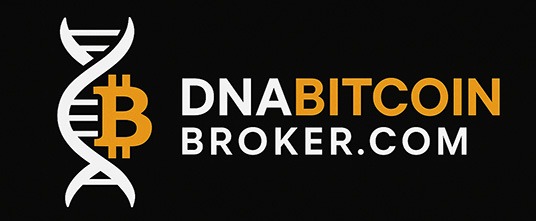“When your money earns yield instead of dust, the system starts to pay attention.” – DNA Crypto Knowledge Base.
Bitcoin-backed loans were once a niche idea whispered in crypto circles.
Today, they sit at the intersection of traditional finance and digital innovation, attracting banks, funds, and corporates seeking liquidity without liquidation.
From Goldman Sachs to Fidelity Digital Assets, the institutional embrace of Bitcoin collateral marks a turning point in financial history — but it’s not without its risks.
Learn more: Institutional Bitcoin Adoption
The Good: A New Era of Collateralised Finance
Bitcoin-backed lending allows holders to borrow against their crypto without selling it — unlocking liquidity while maintaining exposure to long-term appreciation.
In 2025, the market for crypto-collateralised loans will exceed $25 billion, driven by institutional lenders and Fintechs expanding into digital asset finance.
Key advantages:
-
– No asset sale required: Borrowers retain upside exposure.
-
– Instant liquidity: Loans settled within hours, not days.
-
– Global access: Borderless lending independent of traditional credit systems.
For companies and funds, Bitcoin-backed loans provide an alternative to traditional credit markets — one where trust is enforced by code rather than paperwork.
Explore: Crypto Custody Solutions
The Institutional Turn: From Goldman Sachs to Global Banks
In 2024, Goldman Sachs, Nomura, and Standard Chartered’s Zodia Custody quietly began piloting Bitcoin-backed lending products.
Their goal: to offer regulated credit lines secured by digital collateral.
These loans work like traditional repo agreements:
-
Borrowers pledge Bitcoin as collateral.
-
Custodians hold assets in segregated, insured storage.
-
Loans are issued in fiat or Stablecoins.
-
Collateral is released upon repayment.
For institutions, this is a compliance-first model that aligns with MiCA regulation — unlocking access to digital liquidity under a familiar legal framework.
The Bad: Volatility Never Sleeps
Bitcoin’s volatility remains its greatest double-edged sword.
During bull markets, collateral values surge, offering unmatched flexibility.
But when markets dip, lenders issue margin calls — forcing borrowers to post more Bitcoin or risk liquidation.
In 2022 and 2023, many retail borrowers learned this lesson the hard way as major lenders like Celsius and BlockFi collapsed under extreme leverage.
In today’s market, regulation and institutional oversight have improved, but risks persist:
-
– Sudden price drops can trigger automatic liquidations.
-
– Borrowers face taxable events when forced to repay or sell.
-
– Collateral held by third parties introduces counterparty exposure.
Crypto lending can offer an opportunity — but it demands risk management, not blind optimism.
The Ugly: The Illusion of Easy Credit
Not all Bitcoin-backed loans are created equal.
Some unregulated platforms still promise unsustainable yields, misprice risk, or operate without adequate collateral verification.
2025 has seen a surge in offshore and DeFi lending protocols offering high LTV (Loan-to-Value) ratios, tempting borrowers with dangerous leverage.
The reality?
When the market turns, high LTV becomes high risk, and borrowers lose both their collateral and confidence.
DNA Bitcoin Broker urges institutions and individuals alike to scrutinise counterparties, ensure MiCA-aligned custody, and work only with licensed digital asset lenders.
Learn more: Institutional Tokenisation
The Regulatory Reset: MiCA and the Future of Crypto Lending
Europe’s Markets in Crypto-Assets (MiCA) regulation has changed the rules of the game.
Under MiCA, digital lending platforms must:
-
– Hold regulated custody of collateral assets.
-
– Maintain transparency over reserves and lending terms.
-
– Adhere to AML/KYC and consumer protection frameworks.
This shift is driving the next generation of regulated Bitcoin credit markets, where institutions can lend, borrow, and manage risk within a trusted, auditable ecosystem.
MiCA may limit speculation — but it unlocks sustainable innovation for the long term.
Explore: Global Impact of MiCA
DNA Crypto: Building Trust in Bitcoin-Backed Credit
At DNA Crypto, we help clients access liquidity securely through regulated, MiCA-compliant lending channels.
Our services include:
-
– Institutional-grade custody for pledged Bitcoin and digital assets.
-
– OTC liquidity solutions for fiat and stablecoin loans.
-
– Credit advisory and risk assessment for corporate borrowers.
-
– Cross-border settlement with transparent counterparties.
We bridge the world of digital collateral and traditional finance — combining blockchain transparency with institutional trust.
The Bottom Line
Bitcoin-backed loans represent one of the most powerful — and misunderstood — innovations in modern finance.
The good: instant liquidity and global access.
The bad: volatility and liquidation risk.
The ugly: unregulated leverage masquerading as innovation.
But when done right, under regulated frameworks like MiCA, they embody the future of credit — programmable, borderless, and transparent.
At DNA Crypto, we believe Bitcoin isn’t just collateral.
It’s a cornerstone of the new financial architecture — where code, compliance, and confidence finally align.
Image Source: Adobe Stock
Disclaimer: This article is for informational purposes only and does not constitute legal, tax, or investment advice.












